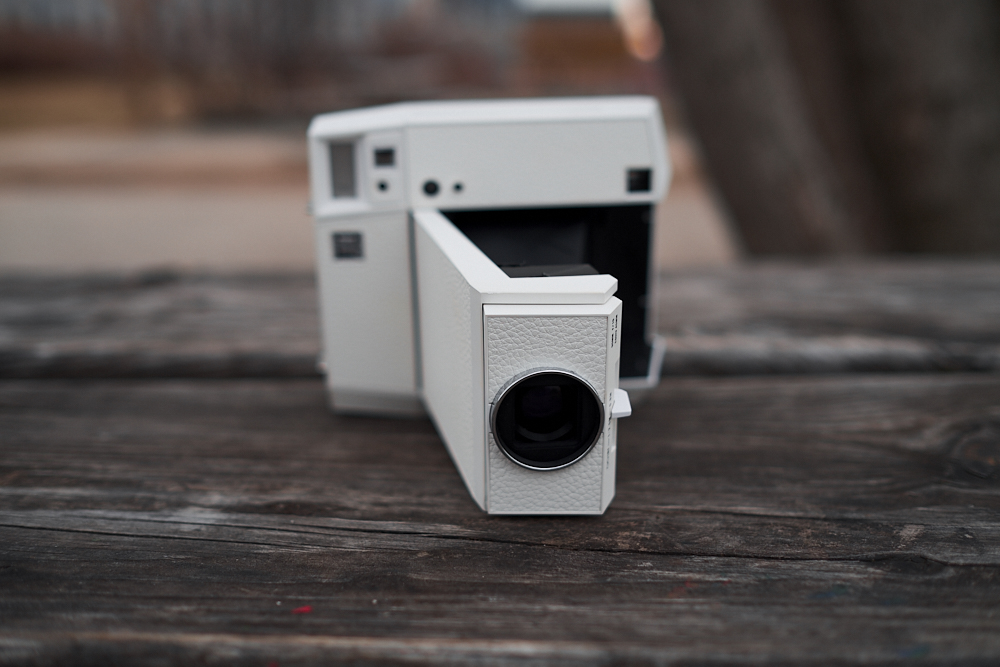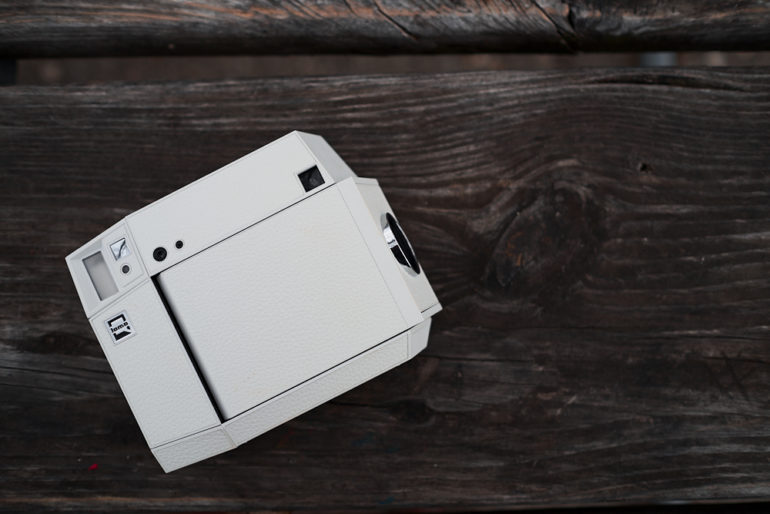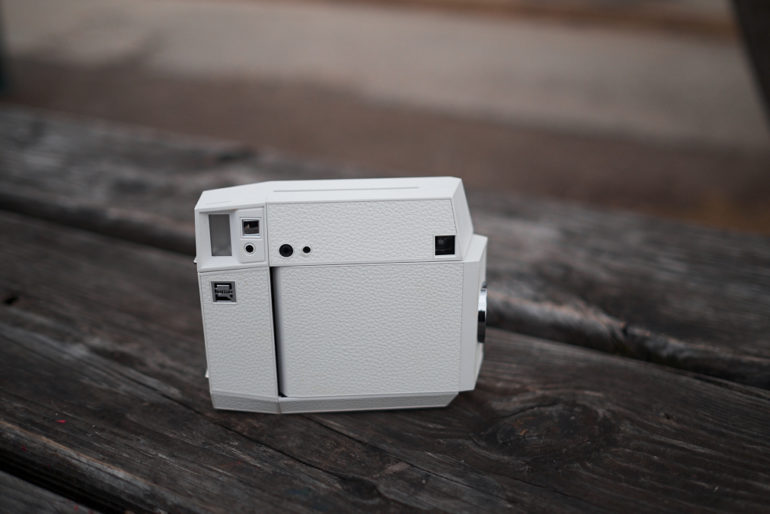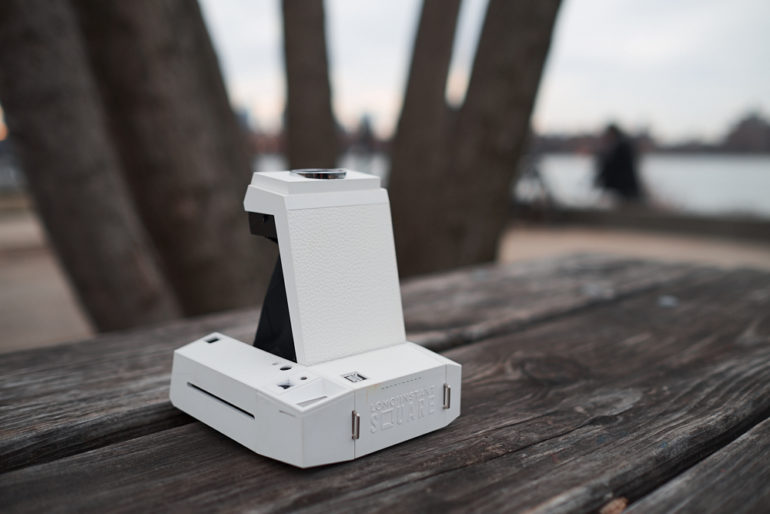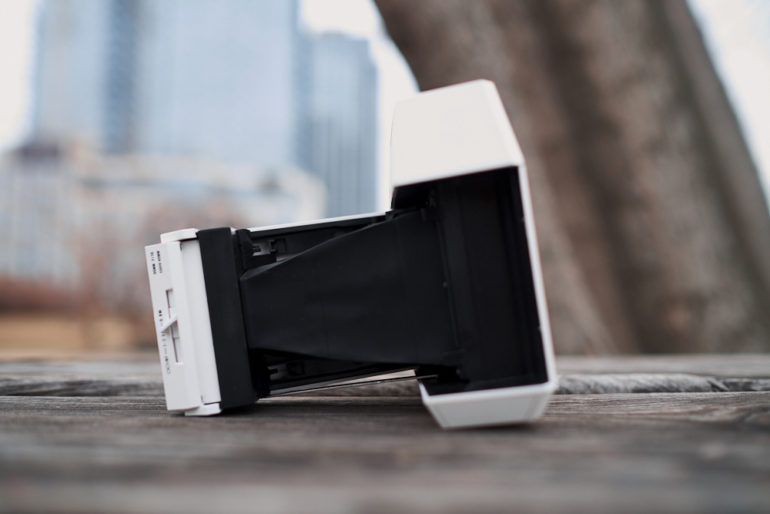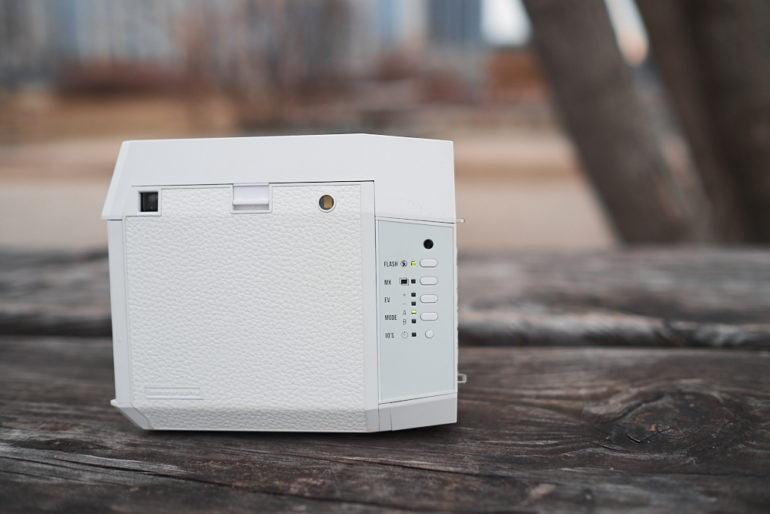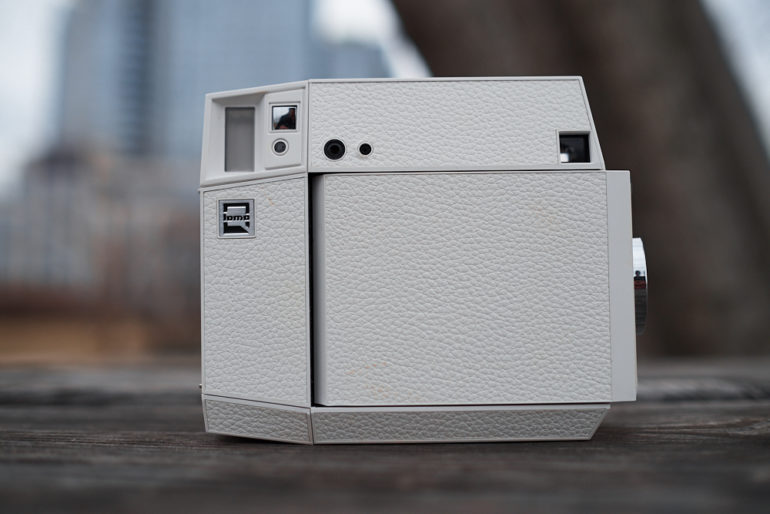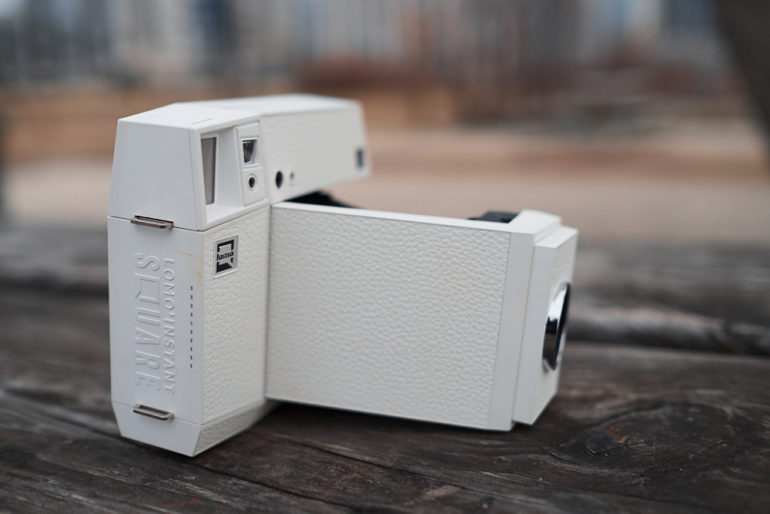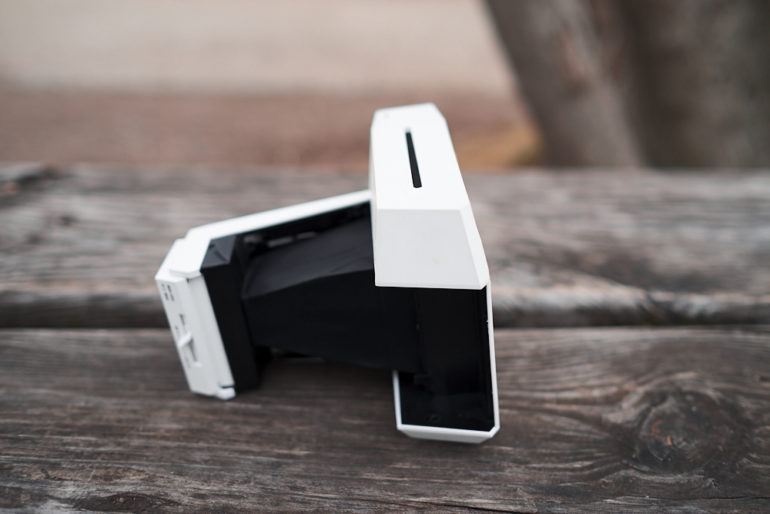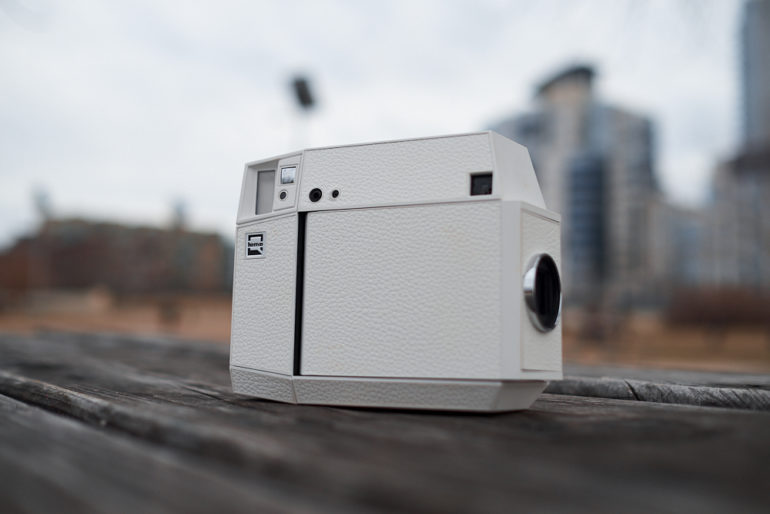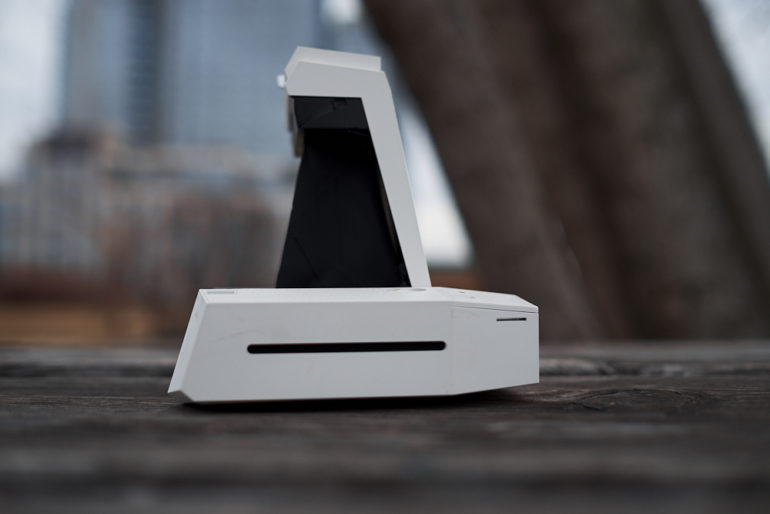The Lomography Lomo’Instant Square is the first good camera to use the Fujifilm Instax Square format.
When Fujifilm came out with their own Instax Square camera, I found it to be a serious letdown; but now we’ve got the Lomography Lomo’Instant Square. This camera is far different; for starters, it’s actually analog. This will appease so many photographers who wanted something that wasn’t a digital photo being taken and then printed out onto a piece of film. On top of that, just look at it–it draws inspiration from a previously made Kodak Instant Film camera. Announced last year as a Kickstarter, the camera is starting to make its way into the hands of a number of people. I was able to play with a prototype awhile back; but the finalized production camera is quite a bit better.
Pros and Cons
Pros
- Really cool design
- Analog imagery!
- Fantastically sharp lens
- A fair amount of settings
- Compacts down to fit into a jacket pocket
Cons
- Focusing can be difficult
- Even though the bellows are well built, I wonder about their long term durability
- While this isn’t a con per se, I really want an all manual version of this camera
Gear Used
We tested the Lomography Lomo’Instant Square with the Fujifilm Instax Square film.
Tech Specs
Specs taken from our announcement post
- Film Format: Fujifilm Instax Square Film
- Exposure Area: 62mm x 62mm
- Lens Focal Length: 95mm (45mm equivalent)
- Auto Exposure Type: Programmed Automatic
- Aperture: Automatic f/10, f/22
- Shutter Speed: Bulb Mode up to 30 sec, Auto Mode 8s to 1/250
- Exposure Compensation: +1/-1 Exposure Values (Ambient Exposure)
- Film Ejection Mechanism: Motorized
- Multiple Exposures: Unlimited
- Built-In Flash Guide Number: 9 (m)
- Built-In Flash: Automatic Flash & Flash Off Mode
- Closest Focusing Distance: 0.8m
- Zone Focusing Setting: 0.8m / 1-2.5m / infinity (pre-set at 1-2.5m)
- Tripod Mount: Yes
- Remote Control Transmission: Infrared (front & back sensors on camera)
- Self Timer: Electronically controlled countdown to 10 seconds
- Film Counter: LED indication, counting down
- Battery Supply: 2 x CR2 batteries (6V) — please note that batteries are not included
- Remote Control Battery Supply: CR2025 (3V) — please note that batteries are not included
- Filter Thread Diameter: 30.5mm
- Lens Attachments: Portrait Glass Lens (closest focusing distance 50cm), Splitzer. Available in combo packages.
Ergonomics
The Lomography Lomo’Instant Square camera is nowhere as compact as the Fujifilm SQ camera, but it makes up for that with a whole heck of a lot more charm. On the front of the camera you can see the light meter, the selfie mirror which doubles as a shutter button, and a viewfinder in addition to the flash. Then there is this giant hinged area. Said area unfolds to allow the camera to operate and shoot.
Unfold this area by simply pulling it out with a bit of force. Then it will click into place and the camera will be ready to fire.
For all the analog lovers out there, yes there is a bellows. It’s made of rubber and it’s surprisingly nice. Below it is a metal latch then you’ll need to press in order to make the entire thing compact again. If you’ve used Polaroid’s Land cameras, then it works in the same way.
Turn to the back of the Lomography Lomo’Instant Square and what you’ll spot here is the film loading bay and buttons. These buttons control various functions like multiple exposure, exposure compensation, flash on/off, etc. It’s very standard Lomo at this point.
Build Quality
Hold the Lomography Lomo’Instant Square and you’ll realize that of any of their Instant film cameras, this is probably the most solid feeling right up there with the Lomo’Instant Glass. This camera actually has a glass lens too. When I held the prototype I was concerned that the bellows and all would collapse after prolonged use. But I haven’t had that happen to me yet after about a month of use. So far, it’s held up.
I wouldn’t bring it out into rain or inclement weather and by and large I remember that this is still a Lomography product. I don’t drink anymore, but if I were to take it out to something like say my drunken 27 year old friend’s Karaoke night, then I’d wear this with a strap and keep it tucked under my arm or coat. Most Lomo products in the Instant series need TLC when they’re being used; but I feel like the Lomography Lomo’Instant Square may need some extra love despite its solid nature. The reason for this is because of the bellows–anytime that a bellows system is incorporated into a product, I get a bit antsy. I’m still careful with my Polaroid 185 Land camera and I’d be extra careful with this due to the inclusion of electronics. Of course, that could just be paranoia on my side–but if you’ve shot for as long as I have then you’ll understand the paranoia. They’re bellows: if they take a solid hit they’ll break and expose a whole lot of light onto the film effectively ruining the image.
With all this said, if you’re careful with it and treat it sort of like a Canon Rabel or an old Polaroid camera, you’ll be fine. At the end of the day, it’s an electronic accessory and people are known to do horrific things to them. If you don’t subscribe to that type of behavior, then you’ll be just peachy.
Ease of Use
Despite my qualms with build quality, I have to admit that the Lomography Lomo’Instant Square is incredibly simple to use. When I first encountered it I was a bit confused but once I got the hang of it, it made a lot of sense. To clarify that statement, I was confused about pulling the lens system out from the rest of the body via the hinge. It’s pretty tightly packed in and I thought that I needed to press a button. Nope, just pull it out with a bit of force. Then to collapse it, press the bottom latch and let it fold in on itself.
Operating the buttons is business as usual; Lomography has had this down perfectly for years and does an arguably better job than Fujifilm when it comes to this.
My biggest qualm with the ease of use comes with focusing the lens. The focus tab is on the side of the front of the lens and you can focus it to a degree. But more often than not, you’ll be playing guess work with the Lomography Lomo’Instant Square until you’ve shot at least two packs of film. Lomography could have done a significantly better job with labeling the focusing here and I wish that I wouldn’t have to say “you get a feel for it after some time.” It works via zone focusing, and how much of the scene is in focus varies depending on what the aperture is set to. Unfortunately you don’t have control over that variable.
While that will be nice for much of who Lomography’s audience is, it’s annoying to me. The flash is also not very strong if you’re indoors. So ensure that your subject is a few feet away; no more than 5 feet if anything. If you’re outside, that’s not a problem at all.
Focusing
The Lomography Lomo’Instant Square is a manual focus camera that focuses via zone focusing. You’ll do this using the little tab on the side of the lens. As I’ve explained earlier, it’s often more painful than it seems. For starters, the focusing starts with being one meter from the actual lens itself instead of the film plane. That’s an odd one. When you look through the viewfinder, you’re not getting a through the lens experience but instead something just for framing. You’ll need to compensate since the lens is below the viewfinder.
While this may all sound like it’s pretty awful, it really isn’t. Once you play with it and use it and learn the quirks, you start to realize that the human mind is pretty adaptable and guys in forums and Facebook groups just have nothing better to do than complain because they like to. That type of toxicity isn’t really needed.
Image Quality
Here’s the best part of the Lomography Lomo’Instant Square: the image quality. This is the sharpest lens that I’ve seen from Lomography and when you get the focusing perfect, you’ll realize that too. It’s possible to get bokeh and all that stuff, but I think that the image quality could only have benefited from manual functionality. Couple that with just how good Fujifilm Instax Square film really is and you’ll get some very impressive and fun photos.
Conclusions
I genuinely do like the Lomography Lomo’Instant Square. But I feel like there is room for improvement. I admire Lomo’s commitment to trying to keep it compact with the folding bellows. I’m not sure how that will work out in the long run though; but these bellows are very solid as long as you’re careful with them. My fear is that they’re introducing this to a generation of photographers who don’t even understand that Instax is actually film–as so they’ll not really understand bellows either. So in essence, I’m not really pinning the fault on Lomo per se.
So what’s great about this camera? The lens: it’s incredibly sharp and when you add flash to the scene it’s going to deliver a sharpness that rivals so many cameras out there. In fact, the imaging area is slightly larger than 6×6 medium format. For that reason, I really wish that there were manual controls. But that isn’t happening anytime soon if my conversations with Lomography’s owners were any sort of hint at the future. Still though, I have to admit that if you were to take this image quality and put it against Fujifilm’s the Lomography Lomo’Instant Square will win hands down each and every time.
I strongly recommend the Lomography Lomo’Instant Square for the more advanced photographer and not necessarily for a newbie.
The Lomography Lomo’Instant Square receives four out of five stars. Want one? Check them out on Lomography’s website.


